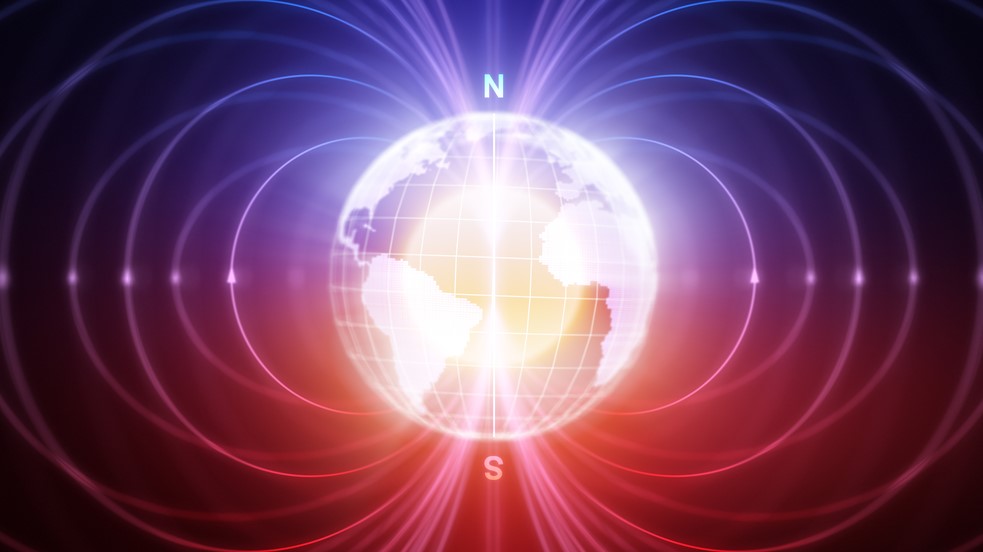Eerie sounds triggered by plasma waves hitting Earth's magnetic field captured in new NASA sound clip
NASA has converted years of satellite data on Earth's magnetosphere into eerie sound clips that can be used by citizen scientists to help make new discoveries.
NASA has released an eerie new sound clip full of high frequency "whistles, crunches, and whooshes" created when waves of plasma slam into our planet's magnetic field lines and make them "vibrate like the plucked strings of a harp," the space agency said.
The new audio, released April 17, sounds like it comes straight out of a low-budget sci-fi movie. But it is actually part of NASA's new Heliophysics Audified: Resonances in Plasmas (HARP) project, which turns data about Earth's magnetosphere — a magnetic bubble around our planet's outer atmosphere that shields us from dangerous solar storms and radiation from the sun — into sound bites.
The space between Earth and the sun may appear empty, but in reality, it is filled with plasma, or ionized gas, and other highly energetic particles that stream from the sun toward our planet, either as slow-moving solar winds or as fast bursts during solar storms. When these plasma waves hit the Earth's magnetosphere they create fluctuations, or vibrations, in the plasma shield, which give off "ultralow-frequency" radio waves, NASA representatives wrote in a statement.
NASA's Time History of Events and Macroscale Interactions During Substorms (THEMIS) mission, which consists of five satellites launched in 2007 that traverse the magnetosphere, has recorded more than 15 years of these ultra low-frequency waves. The HARP project has now converted the THEMIS data into audible sounds to make it easier to identify irregularities in the Earth's plasma shield. Such analyses could lead to new discoveries about the magnetosphere and the sun.
Related: Hidden tide in Earth's magnetospheric 'plasma ocean' revealed in new study

The aim of the HARP project is to enable citizen scientists to listen to the sound clips and highlight unusual patterns for researchers to investigate more closely. Turning the data into sound helps to make it easier for people to spot irregularities in patterns, researchers wrote.
"The human sense of hearing is an amazing tool," Martin Archer, a magnetosphere expert at Imperial College London and HARP team member, said in the statement. "We're essentially trained from birth to recognize patterns and pick out different sound sources. We can innately do some pretty crazy analysis that outperforms even some of our most advanced computer algorithms."
Sign up for the Live Science daily newsletter now
Get the world’s most fascinating discoveries delivered straight to your inbox.
The team has already made a surprising discovery from their preliminary sound bites, which contain patterns that go against what they previously predicted. They have dubbed these unexpected sounds the "reverse harp" and will study the intriguing perturbations in more depth in the future. They hope the project will uncover even more unexpected discoveries in the near future.
"HARP has the potential to find things that we weren't expecting," Archer said, "which is really exciting."
This is not the first time that scientists have recorded sounds coming from the magnetosphere.
On Feb. 17, an X-class solar flare — the most powerful class the sun can produce — slammed into Earth, causing widespread radio blackouts. Amateur radio astronomer and citizen scientist Thomas Ashcraft, who is based in New Mexico, managed to capture a rare audio recording of the flare colliding with Earth. But unlike the trippy new HARP sounds, this recording sounded like aggressive static.

Harry is a U.K.-based senior staff writer at Live Science. He studied marine biology at the University of Exeter before training to become a journalist. He covers a wide range of topics including space exploration, planetary science, space weather, climate change, animal behavior and paleontology. His recent work on the solar maximum won "best space submission" at the 2024 Aerospace Media Awards and was shortlisted in the "top scoop" category at the NCTJ Awards for Excellence in 2023. He also writes Live Science's weekly Earth from space series.











